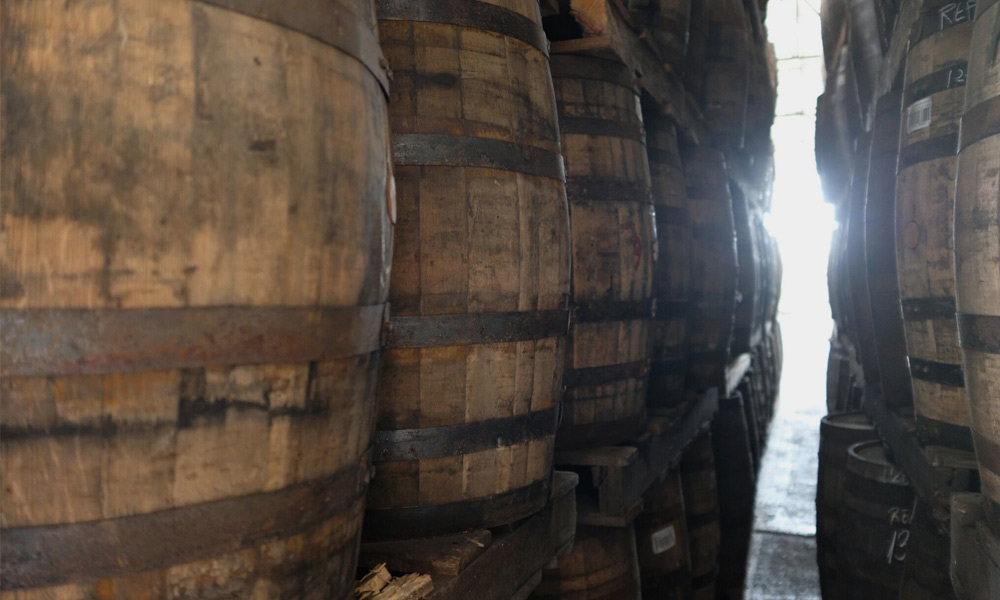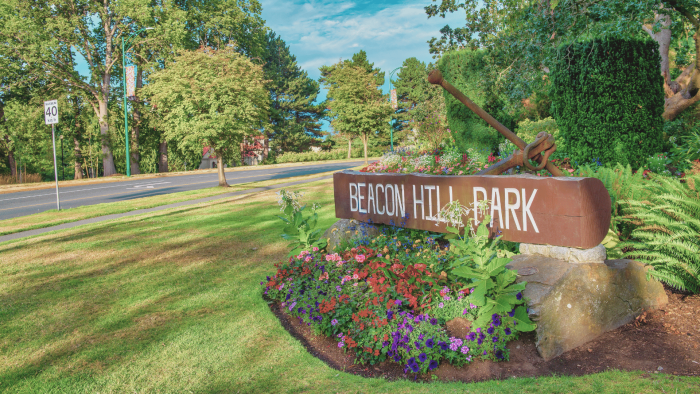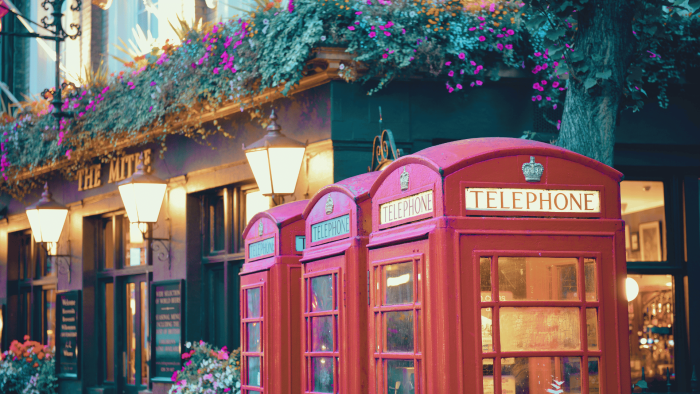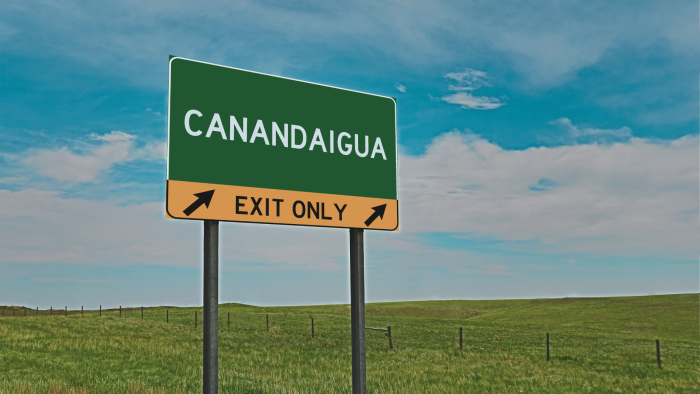If we’re really looking for a delightful after-dinner cocktail or a stiff one after a hard day’s work, we’re picking up where bourbon sometimes falls short, and grabbing a pour of some barrel-aged rum. Case in point? Flor de Caña. This Nicaraguan rum company has been producing some of the best rum on the planet since 1890, more than 125 years.
When they invited us out to Managua to visit their distillery and learn more about their products and how, exactly, they go about producing some of the most popular rum in the world (They’re Nicaragua’s #1 exported brand, and they were ranked the number one rum producer in the world at 2017’s International Wine and Spirit Competition), we took them up on the offer.
Not only did we get to sample the expressions under their label (both the 12- and 18-Year now live on the shelves of our home bar), but we also got to tour the distillery, where we learned what makes For de Caña unique.
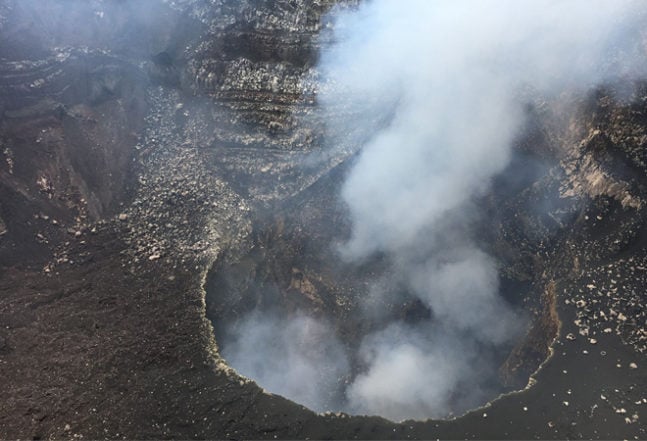
Those Volcanos? They Matter
When you first arrive at the Flor de Caña distillery, it’s difficult not to notice the massive mountainous volcano in the background. It’s the San Cristóbal Volcano, and yes, it’s active. In fact, for better or worse, it’s the most active volcano in Nicaragua, and last erupted in 2014—they were tiny explosions, but explosion nonetheless.
Why’d they set up shop so close to a potentially catastrophic volcano? Well, one reason is that the volcanic ash is full of minerals and nutrients that leave the soil incredibly fertile, making it ideal for farming the sugarcane their rum depends on. Even the water is extra pure, thanks in part to the porous land it filters through.
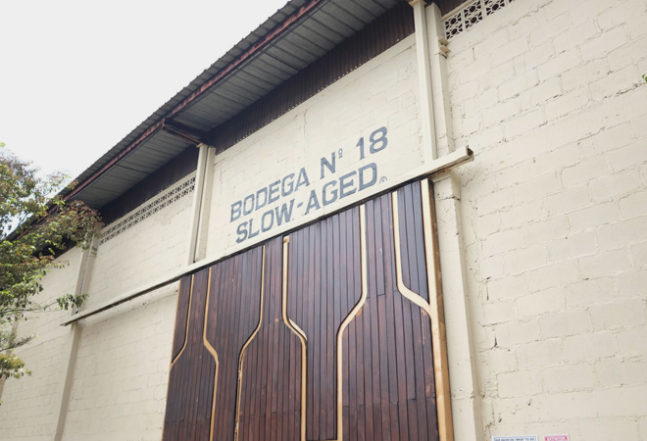
Perhaps most importantly, the environment itself makes the maturation process unique. You’d probably think Flor de Caña, big as they are, has some kind of gigantic underground climate-controlled bunker where they age their products, but the process is surprisingly old school. They store their barrels in massive warehouses (called bodegas) located on the distillery grounds, and everything from the altitude to the fluctuation in weather is taken into account during maturation period. Every single detail somehow affects the final product, which means that win, lose, or draw, Flor de Caña will always be Flor de Caña.
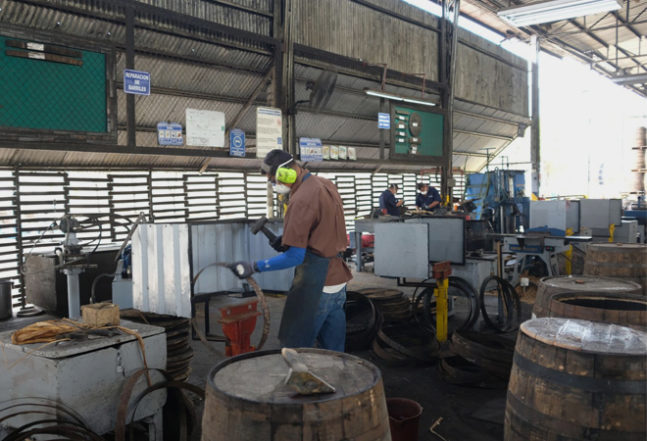
Casks Done Differently
Flor de Caña, like a lot of other spirits, is aged in white oak bourbon barrels, which is where the rum gets its sweeter vanilla and oakier notes. That part is pretty standard stuff. Their onsite cooperage, however, is not. They use it to repair or even completely rebuild their oak barrels in order to make sure they’re up to snuff.
They also seal each and every cask with plantain leaves, where a lot of other companies use food-grade plastics. The casks are sealed because Nicaragua’s tropical climate—read as: “damn hot and humid”—makes maturation occur much more quickly than it would in say, a cool dark cellar. If the casks weren’t sealed, they’d lose too much alcohol to evaporation, which would result in poorer quality rum, naturally.
Even though it’s a big hassle, naturally aging their rum means the finished product stays original and authentic. The plantains don’t do much for the overall flavor of the juice, but they do support the brand’s dedication to environmentally conscious production practices.
We’d also be remiss not to mention that Flor de Caña doesn’t add any kind of extra sugar or other chemicals to help speed up the maturation process or smooth out some of the bite of their rum. We’re neither for nor against adding extra stuff to a good booze if it helps with the flavor, but if all natural is important to you, this is definitely something to consider.

Making the Environment a Part of the Business
And speaking about all natural, we could hardly go 10 feet on the distillery tour without someone from the company enthusiastically reminding us that Flor de Caña produces their rum, from start to finish, with 100% renewable energy by way of biomass (which is fancy talk for “they burn plant waste, mostly spent sugarcane, to create the energy needed to run the stills”).
The company also plants at least 50,000 trees per year to avoid jeopardizing its water source, and is committed to recycling 250 tons of cardboard, 700 tons of glass, and 76,000 pounds of plastic every single year.

But What About the Rum?
We got to taste all of Flor de Cañas expressions while we were out there (some several—perhaps dozens of—times), and there wasn’t one we didn’t like. There’s obviously a difference between their white 4-year, which we had in tonic with a little lime, all the way through their 25-year, which we appreciated neat (and poolside with hand-rolled Nicaraguan stogies in our mouths).
At the end of the day, we’re always excited to talk about rum because the drink doesn’t get nearly the respect it deserves. A good aged rum has a lot to offer, whether you’re a whiskey enthusiast looking to branch out or just tired of the same old rum and cokes at the backyard barbecue.

